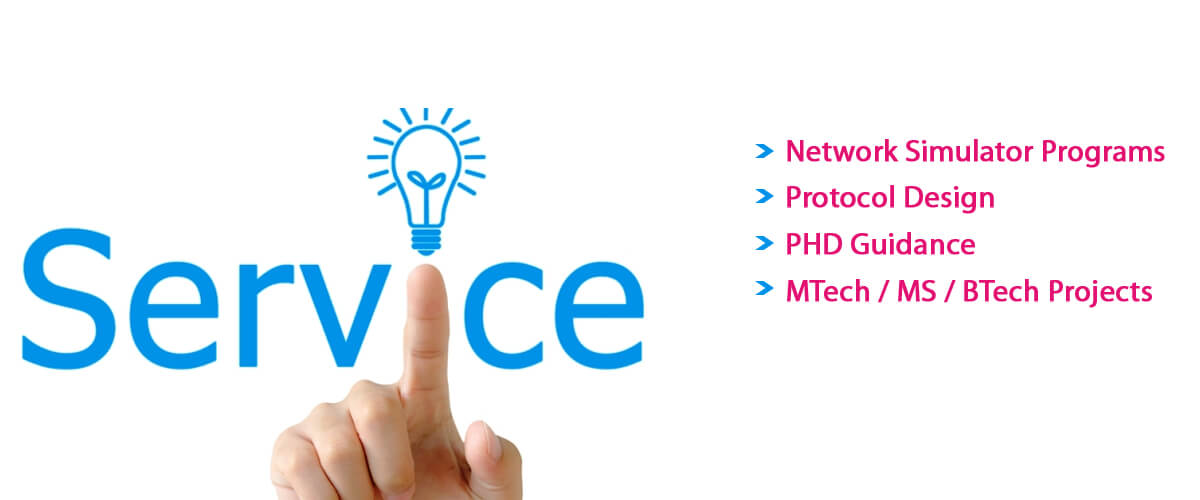5G Open Source Project
5G Open-Source Project Ideas tailored for your needs. Our domain experts will guide you through every stage of your paper for optimal results. In order to develop a 5G-based project, an ideal topic must be chosen based on individual expertise, available resources, and requirements. Here are some of the emerging 5G Open-Source Projects shaping today’s technological landscape. If you’re looking for novel thesis topics in this domain, we can provide you with research ideas. We have worked on various key areas, ensuring high-quality research support. Our domain experts will guide you through every stage of your thesis, helping you achieve the best results.
Along with necessary tools and environments, we suggest a few 5G open-source project topics and plans:
- 5G Core Network Development
- Project Plan: Focus on creating an open source 5G core network and expanding its efficiencies.
- Tools and Environments: Open5GS, Free5GC, and OpenAirInterface (OAI).
- Missions:
- Novel network functions have to be applied, including Network Slice Selection Function (NSSF) or Authentication Server Function (AUSF).
- Consider the current core network functions and improve their scalability and functionality.
- By means of Docker and Kubernetes, we plan to create automated deployment scripts.
- 5G Radio Access Network (RAN) Optimization
- Project Plan: Reflect on the open source 5G RAN and enhance its functionality.
- Tools and Environments: srsRAN and OpenAirInterface (OAI).
- Missions:
- Massive MIMO algorithms have to be applied and improved.
- Novel beamforming methods must be created and examined.
- For millimeter-wave frequencies, it is important to incorporate assistance.
- 5G Network Slicing Implementation
- Project Plan: In a 5G network, the network slicing should be applied and established.
- Tools and Environments: Kubernetes, Free5GC, and OAI.
- Missions:
- Including various QoS parameters, several virtual network slices have to be developed.
- For network slices, we intend to build dynamic resource allocation algorithms.
- Across various traffic contexts, the network slicing has to be examined and demonstrated.
- 5G Edge Computing Integration
- Project Plan: To enhance functionality and minimize latency for edge applications, the abilities of edge computing must be incorporated with 5G networks.
- Tools and Environments: Akraino, OpenNESS, and EdgeX Foundry.
- Missions:
- In the 5G core network, the edge computing nodes should be implemented and combined.
- For actual-time data processing, concentrate on creating edge applications.
- Among edge and core networks, the resource allocation has to be enhanced.
- 5G Security Enhancements
- Project Plan: Consider the 5G networks and improve their security characteristics.
- Tools and Environments: Wireshark, OAI, and Open5GS.
- Missions:
- Advanced authentication and encryption techniques have to be applied.
- For 5G, we aim to create intrusion detection and prevention systems (IDPS).
- It is crucial to carry out risk evaluation and security testing processes.
- 5G IoT Connectivity
- Project Plan: For IoT devices, the 5G connectivity approaches have to be created and enhanced.
- Tools and Environments: Raspberry Pi, Arduino, Free5GC, and OAI.
- Missions:
- For IoT, the lightweight communication protocols must be utilized (for instance: CoAP and MQTT).
- Specifically for extensive IoT placements, improve linkage and power usage.
- In a 5G network, the functionality of IoT devices has to be examined and assessed.
- 5G Smart City Applications
- Project Plan: For smart cities, the 5G-based applications should be created.
- Tools and Environments: GIS software, IoT devices, Free5GC, and OAI.
- Missions:
- Plan to apply frameworks for actual-time traffic handling.
- Focus on creating applications for energy management and smart grid.
- By means of 5G, we intend to develop emergency response and public security approaches.
- 5G for Autonomous Vehicles
- Project Plan: Particularly for self-driving vehicles, the 5G-related communication frameworks have to be created.
- Tools and Environments: ROS (Robot Operating System), CARLA Simulator, Free5GC, and OAI.
- Missions:
- Vehicle-to-Everything (V2X) communication protocols must be applied.
- For autonomous driving contexts, the reliability and latency has to be improved.
- In a simulated 5G platform, the self-driving vehicle communication should be examined and demonstrated.
- 5G Network Performance Monitoring
- Project Plan: For 5G networks, an extensive performance tracking framework has to be created.
- Tools and Environments: OAI, Open5GS, Grafana, and Prometheus.
- Missions:
- For various network elements, the tracking agents should be applied.
- To facilitate actual-time performance visualization, we plan to create dashboards.
- Specifically for network abnormalities, the warning and reporting technologies have to be configured.
- 5G Testbed Development
- Project Plan: For exploration and development, an open source 5G testbed must be arranged.
- Tools and Environments: SDR (Software Defined Radio), srsRAN, Free5GC, and OAI.
- Missions:
- By encompassing core network elements and RAN, an overall 5G network should be implemented.
- For handling the testbed, a convenient interface has to be developed.
- To utilize the testbed, extensive documentation and classes have to be offered for developers and scholars.
Sample Project Descriptions
- Network Slicing Implementation with OAI and Free5GC
Goal: Through the utilization of Free5GC and OpenAirInterface, the network slicing has to be established in a 5G network.
Procedures:
- Configure Platform: On our system, the Free5GC and OAI must be installed.
- Implement Core Network: The core network functions have to be implemented by means of Free5GC.
- Implement RAN: To implement the RAN, we aim to utilize OAI.
- Develop Network Slices: Including diverse QoS parameters, the network slices should be specified and arranged.
- Traffic Simulation: On each slice, various kinds of traffic must be simulated (for instance: URLLC, eMBB).
- Performance Assessment: The functionality of every slice has to be evaluated and examined.
- Edge Computing with 5G Integration using EdgeX Foundry
Goal: To improve latency-aware applications, the edge computing must be combined with a 5G network.
Procedures:
- Configure Platform: Focus on installing OAI and EdgeX Foundry appropriately.
- Implement Edge Nodes: Through the use of EdgeX Foundry, we intend to arrange edge computing nodes.
- Combine with 5G Core: With the 5G core network, the edge nodes have to be linked. It is important to consider Free5GC or OAI.
- Create Edge Applications: By considering data processing at the edge, the applications should be developed.
- Latency Optimization: Latency minimization methods must be applied and examined.
- Performance Assessment: Plan to assess various metrics like throughput enhancements and latency.
Regarding the latest mechanisms, students can acquire practical expertise through dealing with these open source 5G projects. It is also possible to discover advanced solutions to actual-world issues and offer support to the community.
How to identify research solutions in 5g network?
A well-formatted procedure has to be followed to detect research solutions in 5G networks. It could encompass investigating current approaches and interpreting the latest problems. To solve the potential gaps, advanced techniques must be suggested. To detect and create research solutions in 5G networks, we offer a procedural instruction explicitly:
- Carry out an Extensive Literature Review
- Goal: The existing condition of study has to be interpreted thoroughly. Plan to find previous approaches. Then, the potential gaps and shortcomings have to be detected.
- Steps:
- Through various databases such as ACM Digital Library, Google Scholar, and IEEE Xplore, we should explore materials relevant to our chosen topic. It could be technical reports, academic papers, and standards.
- On the basis of different concepts like security, edge computing, massive MIMO, network slicing, and others, the literature has to be classified.
- From the studies, the major discoveries, approaches, and conclusions should be outlined.
- Find the Research Issue
- Goal: In terms of the 5G networks, the issue has to be specified in an explicit manner, which we intend to resolve.
- Steps:
- From the literature survey, the detected gaps and shortcomings have to be examined.
- To fulfill these gaps, particular research queries must be designed.
- By considering the available resources, assure the practicality, importance, and applicability of the issue.
- Investigate Current Solutions
- Goal: Regarding the current approaches and their efficiency, some perceptions have to be acquired.
- Steps:
- For solving the same issues, the latest mechanisms and approaches should be analyzed, which are previously employed.
- Consider these approaches and assess their benefits and shortcomings.
- Areas have to be detected, in which the current approaches can be further enhanced or that are defective.
- Suggest Advanced Techniques
- Goal: To solve the detected research issue in a highly efficient manner, new techniques must be created.
- Steps:
- As a means to resolve the issue, advanced techniques and plans have to be considered.
- From various domains such as cybersecurity, machine learning, and AI, combine methods to provide cross-disciplinary solutions.
- To examine these novel techniques, we have to model experiments and create hypotheses.
- Model and Apply the Solution
- Goal: In order to verify our suggested approach, a simulation model or pattern should be created.
- Steps:
- For execution, suitable environments and tools have to be selected (for instance: OpenAirInterface, Python, MATLAB, and NS-3).
- On the basis of our suggested approach, we need to create system designs, protocols, or algorithms.
- Assure that the approach fulfills the performance standards by applying it. This approach should also be credible as well as scalable.
- Assess the Solution
- Goal: By means of thorough testing and analysis, the performance and efficacy of our approach has to be evaluated.
- Steps:
- Across diverse contexts, the functionality of our approach must be assessed by modeling experiments.
- By focusing on major performance metrics like security, energy efficacy, packet loss, latency, and throughput, we should gather and examine data.
- To exhibit benefits or enhancements, the outcomes have to be compared with previous approaches.
- Document and Publish Discoveries
- Goal: Communicate with the expert and academic community to disclose our research discoveries.
- Steps:
- By including our issue, technique, approach, and outcomes, an extensive report or research paper has to be created.
- Regarding the possible upcoming work and impacts of our discoveries, we have to encompass a detailed discussion.
- Consider related conferences, open-access repositories, or journals to submit our project.
Sample Procedure for Detecting Research Solutions
Context: In 5G URLLC applications, plan to optimize latency.
- Literature Review
- Relevant to 5G URLLC, actual-time applications, and latency minimization methods, papers have to be explored.
- The potential discoveries must be outlined. In accomplishing ultra-low latency, the major problems should be detected.
- Find the Issue
- Issue: In URLLC applications, strict latency needs have to be achieved. To attain this objective, the current scheduling algorithms are not highly effective.
- Investigate Current Solutions
- Various existing scheduling algorithms must be analyzed. It could encompass Weighted Fair Queuing, Round Robin, and others. In 5G, their applications have to be considered.
- Focus on these algorithms and assess their functionality. In managing URLLC traffic, their shortcomings should be detected.
- Suggest Advanced Techniques
- Hypothesis: Consider a scheduling algorithm related to machine learning, which can refine latency for URLLC traffic and adjust to network states in a dynamic manner.
- Plan: A reinforcement learning (RL) algorithm has to be created, which can reduce entire network latency as well as learn to select URLLC packets.
- Model and Apply the Solution
- Select tools: For network simulation, employ NS-3. In order to apply the RL algorithm, utilize TensorFlow.
- In NS-3, the RL-based scheduler must be applied. With the 5G network simulation platform, this scheduler has to be incorporated.
- Assess the Solution
- Model Experiments: To examine the RL-based scheduler, different traffic patterns and network states have to be simulated.
- Metrics: It is significant to evaluate various metrics such as computational overhead, packet delivery ratio, and latency.
- Compare Outcomes: Contrary to conventional scheduling algorithms, the functionality must be examined.
- Document and Publish Discoveries
- By summarizing the issue, RL-based approach, assessment outcomes, and execution, an extensive research paper should be created.
- In latency, the enhancements have to be emphasized. On URLLC applications, the possible implications must be addressed.
- For publication, the paper has to be submitted to a related journal or conference.
Tools and Environments for 5G Research
- NS-3: This tool is utilized for network study in an extensive manner. It is referred to as a discrete-event network simulator, which is ideal for internet frameworks.
- OpenAirInterface (OAI): It is considered as a software-based implementation of 5G core network and RAN, and is generally an open-source tool.
- MATLAB: This tool is ideal for numerical calculation, programming, and visualization. It is specifically a superior language and engaging platform.
- Python: For machine learning, Python offers a wide range of libraries (for instance: PyTorch, TensorFlow). It is referred to as an adaptable programming language.
- Free5GC: It is suitable for 5G core network implementation, and is freely accessible.
- EdgeX Foundry: For edge computing, it is an appropriate tool, which is open-source.
Relevant to the domain of 5G, several open source project topics and plans are recommended by us. For assisting you to find and create research solutions in 5G networks, we provided a detailed instruction, including a sample procedure.
5g Open-Source Project Topics & Ideas
5G Open-Source Project Topics & Ideas aligned with the most relevant keywords are shared by us. If you have any queries, feel free to reach out with your details, and we will provide you with a prompt and comprehensive response. Get your work done with clarity, precision, and customization to meet your specific needs.
- Interference coordination for millimeter wave communications in 5G networks for performance optimization
- Coverage analysis and efficient placement of drone-BSs in 5G networks
- Massively concurrent non-orthogonal multiple access for 5G networks and beyond
- Uplink power control framework based on reinforcement learning for 5G networks
- Latency and mobility–aware service function chain placement in 5G networks
- Energy-efficient resource allocation in multi-UAV-assisted two-stage edge computing for beyond 5G networks
- An intra-slice security solution for emerging 5G networks based on pseudo-random number generators
- On guaranteeing end-to-end network slice latency constraints in 5G networks
- Routing constraints in the device-to-device communication for beyond IoT 5G networks: a review
- 5G based Blockchain network for authentic and ethical keyword search engine.
- From 4G to 5G: Self-organized network management meets machine learning
- A predictive interference management algorithm for URLLC in beyond 5G networks
- Open baton: a framework for virtual network function management and orchestration for emerging software-based 5g networks
- Stochastic optimization and control framework for 5G network slicing with effective isolation
- Design considerations of ultra dense 5G network in millimetre wave band
- Massive MIMO design for 5G networks: An overview on alternative antenna configurations and channel model challenges
- Vehicle artificial intelligence system based on intelligent image analysis and 5G network
- Time-sensitive mobile user association and SFC placement in MEC-enabled 5G networks
- CogNitive 5G networks: Comprehensive operator use cases with machine learning for management operations
- Self-organized scheduling request for uplink 5G networks: A D2D clustering approach







